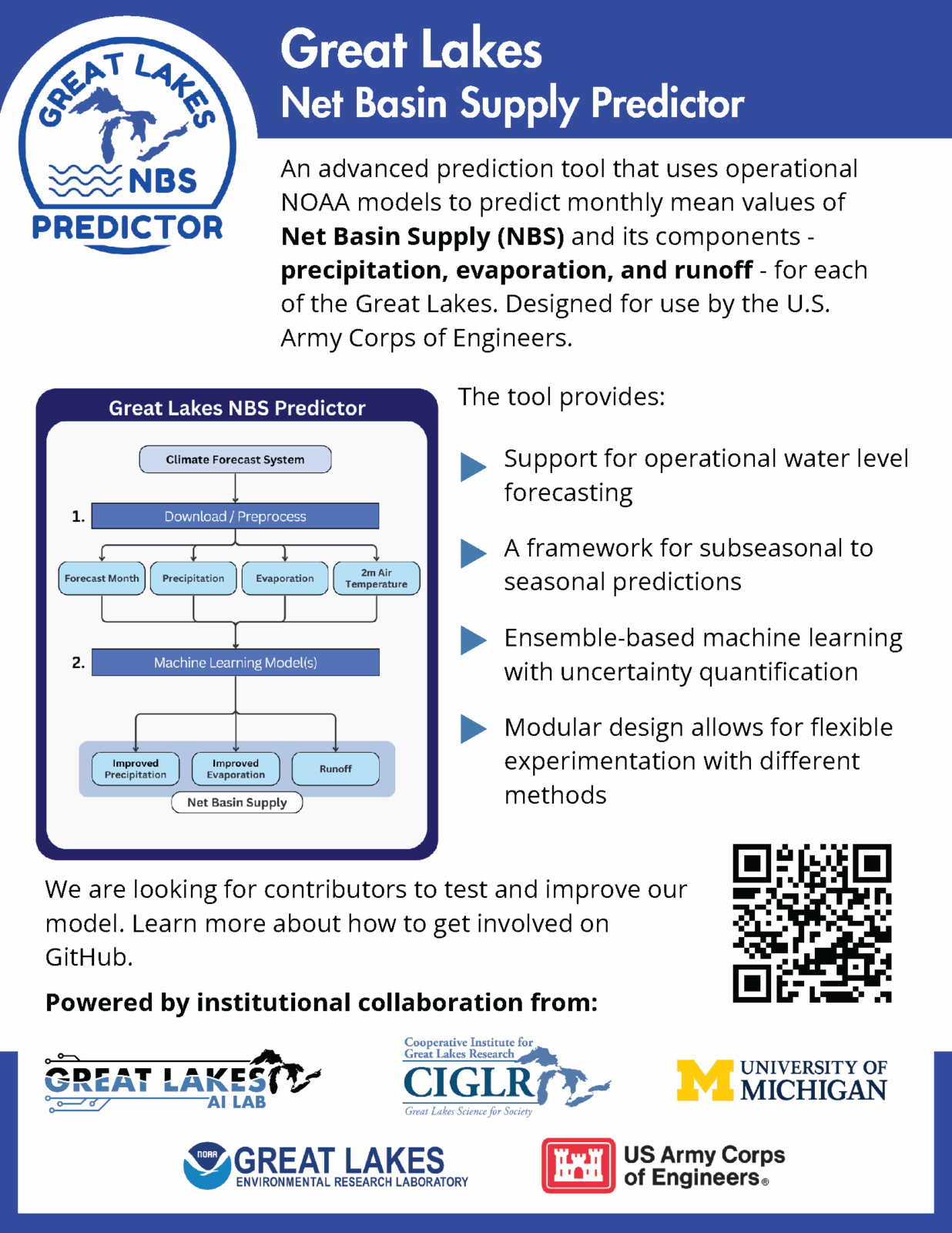
New factsheet! The Great Lakes Net Basin Supply Predictor uses NOAA models and machine learning to support water level forecasting and water resource planning. [Click image to expand]
Designed in collaboration with the U.S. Army Corps of Engineers, NOAA’s Great Lakes Environmental Research Laboratory, and the University of Michigan, the NBS Predictor is intended to improve long-range water level forecasting and support better resource management. Funded by the Bipartisan Infrastructure Law, the tool uses ensemble-based machine learning methods with built-in uncertainty quantification, a framework for subseasonal to seasonal predictions, and a modular design that allows flexibility for experimenting with different approaches. These innovations are helping advance water forecasting beyond traditional methods, giving managers and stakeholders better tools to anticipate and respond to changes in the Great Lakes.
Help Test, Refine, and Enhance the NBS Predictor

Scan for GitHub product page!
The research team is actively seeking contributors to help test, refine, and enhance the NBS Predictor tool. By participating, collaborators will have the opportunity to shape a forecasting system that is not only cutting-edge but also vital for protecting the future of the lakes. To learn more about how to get involved, visit the project’s GitHub page by clicking the link or using the QR code.
By working together, scientists, engineers, and community partners can help ensure the continued advancement of the Great Lakes NBS Predictor, strengthening its role as a vital tool for understanding water balance dynamics and protecting the long-term health of our shared Great Lakes ecosystem.

